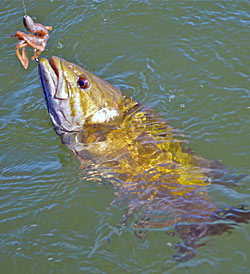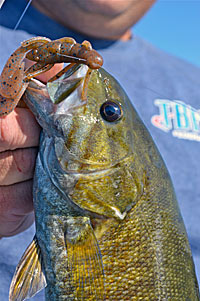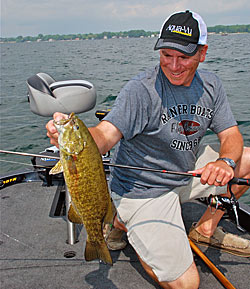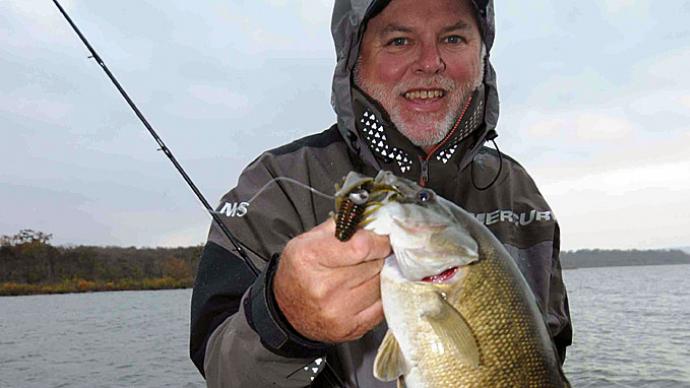
During college, I presented salmon orientation and navigation as part of a biology class. The idea for the presentation was to explain how salmon managed to find their way back to the stream or river where they were hatched or planted years earlier. Scientists knew that the tiny salmon were imprinted with certain signposts beginning as fingerlings and eventually as smolts before they went to sea. The salmon used those cues to find their way back to the same stream as adults three or four years later.
One way was by detecting tiny electrical charges that were in the water. Another way was by using their sense of smell. In one study, salmon reared in one pond were released after being imprinted with a chemical unique to that pond. Four years later, when the salmon were due to return, the same chemical was dripped into a pond much farther upstream from where the salmon were initially raised and planted. A considerable percentage of the salmon returned to the second pond. It was found that salmon could detect chemicals in the water in concentrations of parts per billion. A school of salmon can likely smell an approaching killer whale or sea lions long before they can see them.
There is evidence that a freshwater fish’s olfactory senses are as acute as those of an anadromous trout or salmon. It’s entirely possible that a foraging smallmouth can smell a crayfish hidden in the rocks or a passing school of alewives or shad long before it can see them. That’s why anglers must include scents in their fish-catching equation.
“I’ve never been a believer or proponent of scents for largemouth bass, but I’m 100% sure it makes a difference with smallmouths,” said tournament pro Joe Balog.

Balog said an incident he had in 2004 when Berkley Gulp! first hit the market is a good example. He was pre-fishing for a tournament and whacking chunky smallmouths that would put him in prime position to win the tournament on the new Berkley product. By the end of the day, he’d used up the dozen Gulp! Baits in the package and had resigned himself to fishing similar unscented baits. After an hour of no fish and just a few half-hearted strikes, Balog was in a panic to duplicate the pattern that had refined throughout the day. He found a dried-up Gulp! Bait that a bass had tossed on the floor stuck it on and went back to catching fish. More than just coincidence.
“Gulp! works differently than scents,” shared Balog. “The scents in Gulp! are impregnated in the product. The scent is time-released. It bleeds out of the bait by drawing in water that pushes the scent out.” Balog said that the shapes in which Gulp! was first available were terrible, but the bait still caught bass and was “unbelievably effective” despite the simple shapes. The only trigger had to be smell.
Balog admitted that even though Gulp! is now produced in more life-like shapes, it’s not as effective as it once was, at least for smallmouths. “Part of that may be due to increased fishing pressure and the fact that the bass are seeing, and smelling, that bait more often. Maybe it’s because it’s not the only game in town regarding scent-enhanced baits anymore.”
Balog said that through his research, he’s found that garlic scent is a positive aroma when it comes to smallmouths. “I’ve found that baits with a garlic scent seem to out-produce unscented baits when it comes to smallmouths.” And not just a little garlic either. “I’ve been fishing with a partner, and when I pulled a bait out of the bag at the back of the boat, they could smell it at the front. Now, imagine how strong that scent must be in the water if a human can smell it 10 or 15 feet away.” Balog theorized, “Great Lakes smallmouths are a different animal than largemouths when it comes to scent.”

Balog related an incident when he was fishing a piece of structure that was loaded with bass late in the season. He was catching one chunky smallie after another and decided to experiment. He put an unscented bait on the exact size, color, and shape as the one he’d been using, except it lacked the garlic scent. After a dozen casts without a strike, he replaced the bait with the scented one he’d been using. He caught a four-pound smallmouth on the first cast.
Balog said he found commercial garlic scents that worked but went on a quest to develop his concoctions. He supersaturates his soft plastics with the scents, keeps them in zip-loc bags separate from other baits, and even reserves specially fermented stocks for tournaments. Balog admitted that scent is a positive trigger close to 90% of the time and, if nothing else, it gives him a psychological edge.
Scents might not only be an attractant to smallmouths but could also be a cover scent. Soft plastic baits smell like plastic when they come out of the mold, and scents reduce that strange smell. Scents also mask human smells or pheromones that may be alarming to bass. Simply put, to bass, you stink!
“The idea is to keep unwanted scent off your hands,” said Balog. “I wash my hands with unscented products every time I fish. Most of the research that has been done with regards to bass has been done with largemouths. How much scent influences smallmouths is largely conjecture, but I’ve seen more than my share of coincidences. I think it’s a huge factor when it comes to smallmouths.”
Garlic isn’t the only scent bass have shown an affinity to. Scents and scent-enhanced baits are available in coffee, salt-impregnated, shad, crayfish, anise, and others. It only makes sense if you’re fishing a crawfish imitation that adding a crayfish scent will add to the productivity of the bait.
There’s some question about whether scent makes a difference on hard baits that are retrieved at a fast pace. Most agree bass strike a speeding, vibrating crankbait because of what they see and feel. There isn’t time to smell the bait. Smallies may home in on the scent trail left by the bait if you’ve applied a scent product to the lure and enhanced the illusion.
I’ve experienced times when scent added to hard baits made all the difference in the world. When guiding for winter steelhead, I’d add Dr. Juice to crankbaits by liquefying Vasoline in boiling water, filling a film container half full of the Vasoline and the rest with Dr. Juice, and then stirring the mixture up. I’d apply the paste to the backs of my crankbaits. I observed many times, especially in super cold water, when the scents significantly differed between catching fish and going home skunked. Why not stack the odds in your favor?




